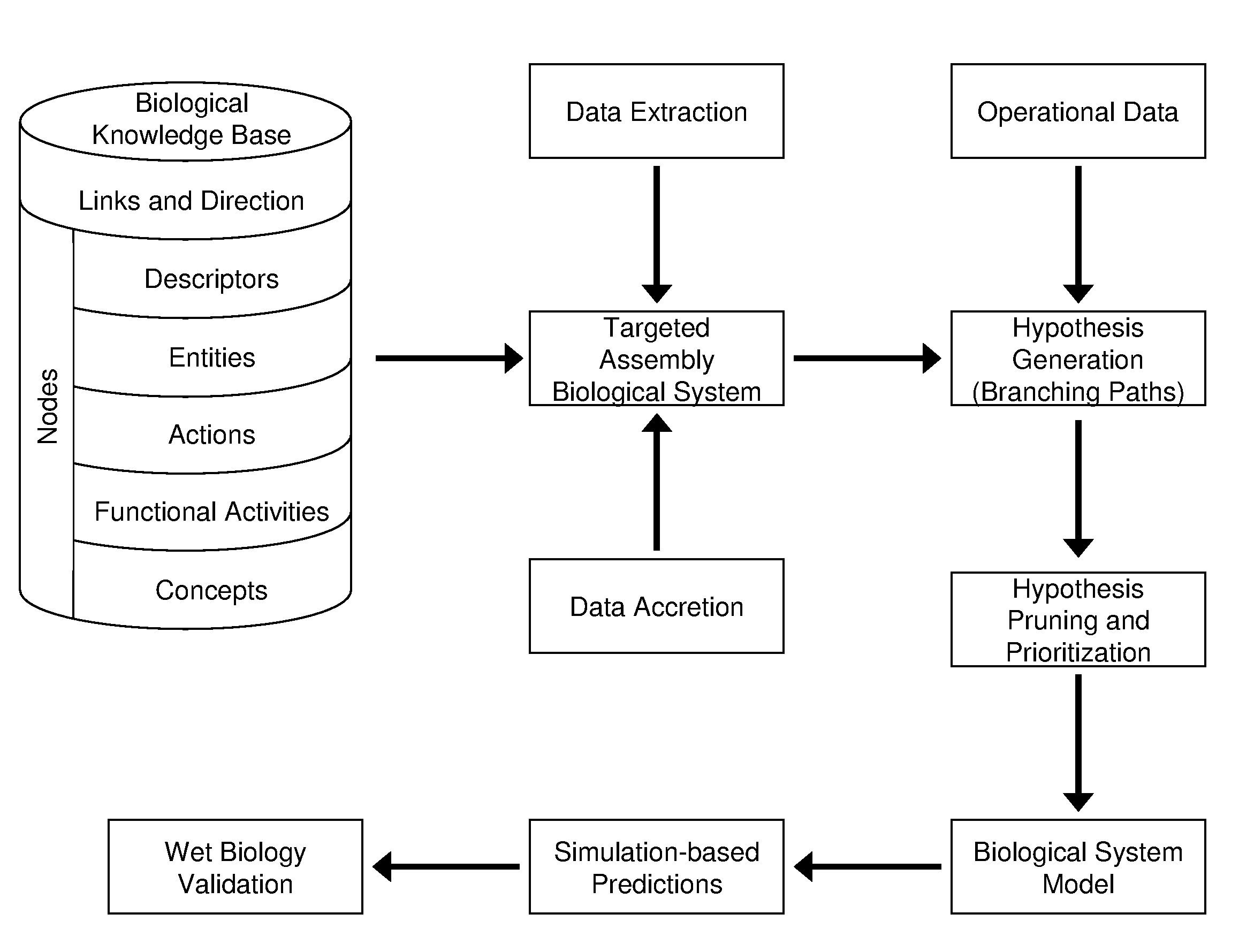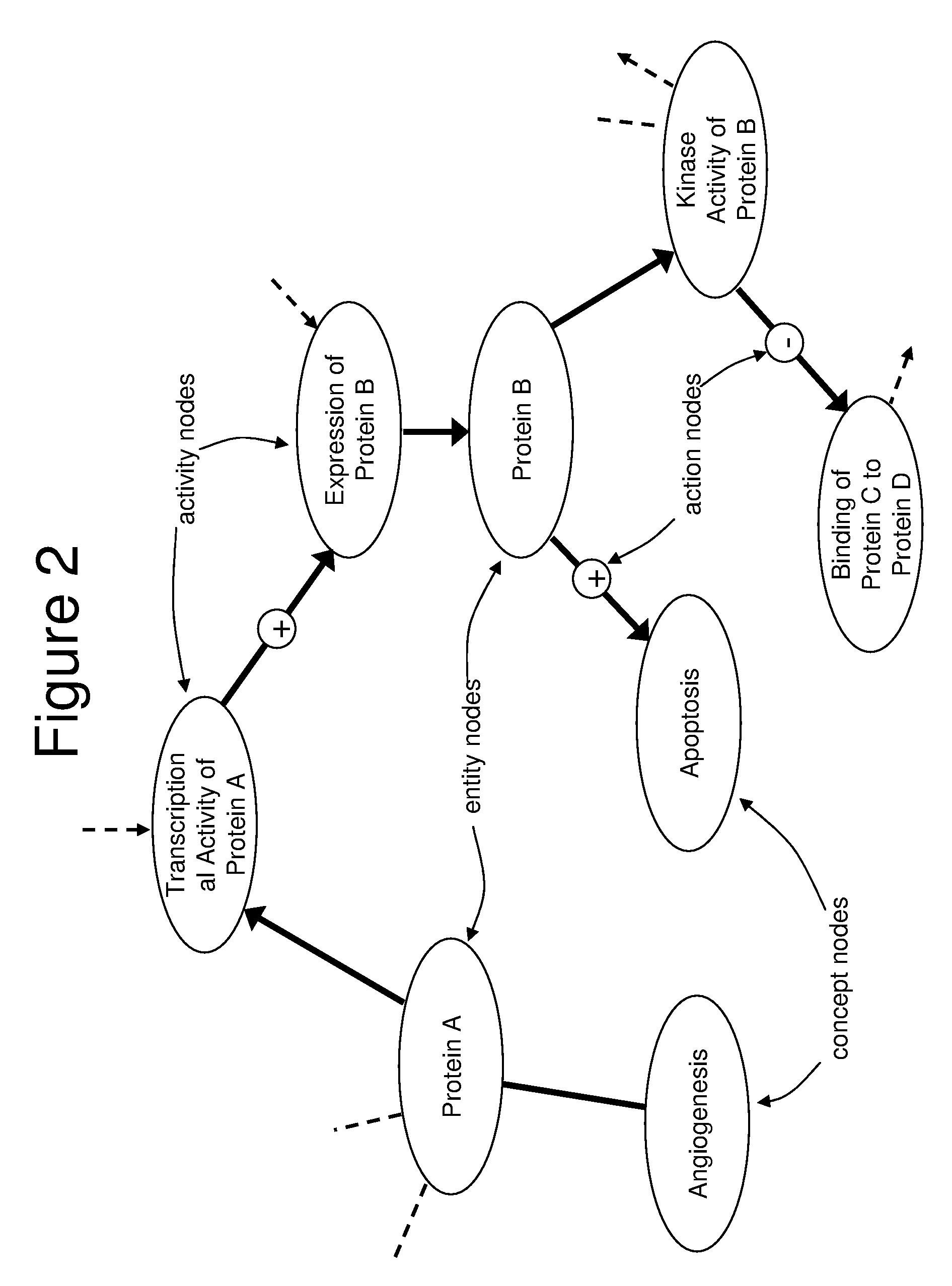Computer-aided discovery of biomarker profiles in complex biological systems
a biomarker and computer-aided technology, applied in the field of computer-aided discovery of biomarker profiles in complex biological systems, can solve the problems of poor sensitivity or specificity of many such putative profiles or biomarkers upon validation testing, poor so as to be essentially worthless as a basis, statistical techniques, while useful, do not provide a biologically motivated explanation of function
- Summary
- Abstract
- Description
- Claims
- Application Information
AI Technical Summary
Benefits of technology
Problems solved by technology
Method used
Image
Examples
example 1
[0122]In one application of the invention, an analysis was performed by the proprietor hereof in collaboration with a partner company. The company supplied operational data comprising 1091 changes in RNA levels observed to occur between time points in an experiment, and it was of interest to understand the biological changes occurring across the timeframe of the experiment. The knowledge base used to perform this analysis contained 1.15 million nodes and 6.28 million links. A knowledge assembly focused on human biology and proteins known to occur in the tissue of interest was constructed from the knowledge base as set forth above and in more detail in copending U.S. application Ser. No. 10 / 794,407 (U.S. publication Serial Number US2005-0154535A1), discussed above. Assertions based on human research present in the knowledge base were included as well as facts based on mouse or rat experiments when a homologous relationship was observed between the model organism proteins upon which t...
example 2
[0124]In another example, biomarkers were desired for a cellular process occurring in the pancreas. Pancreatic cell samples from normal and diseased rats were assayed by microarray analysis to determine 294 changed gene expressions. An assembly containing 197,788 causal relationships from 28,568 references was built. Logical simulation generated 253 hypotheses that provided explanations for the 294 state changes. Logic-based criteria were applied to prune this set of hypotheses to 17 of the most plausible. These 17 hypotheses were harmonized into a CSM that contained 795 nodes from 219 references and explained 147 of the observed changes in gene expression. Portions of the CSM contained information around nonspecific disease affects such as inflammation, while other portions of the CSM were related to biological changes specific to the disease process. This information may then be used to predict which biomolecules present in rat blood were informative of the pancreatic condition.
[0...
PUM
| Property | Measurement | Unit |
|---|---|---|
| concentration | aaaaa | aaaaa |
| concentrations | aaaaa | aaaaa |
| structure | aaaaa | aaaaa |
Abstract
Description
Claims
Application Information
 Login to View More
Login to View More - R&D
- Intellectual Property
- Life Sciences
- Materials
- Tech Scout
- Unparalleled Data Quality
- Higher Quality Content
- 60% Fewer Hallucinations
Browse by: Latest US Patents, China's latest patents, Technical Efficacy Thesaurus, Application Domain, Technology Topic, Popular Technical Reports.
© 2025 PatSnap. All rights reserved.Legal|Privacy policy|Modern Slavery Act Transparency Statement|Sitemap|About US| Contact US: help@patsnap.com



